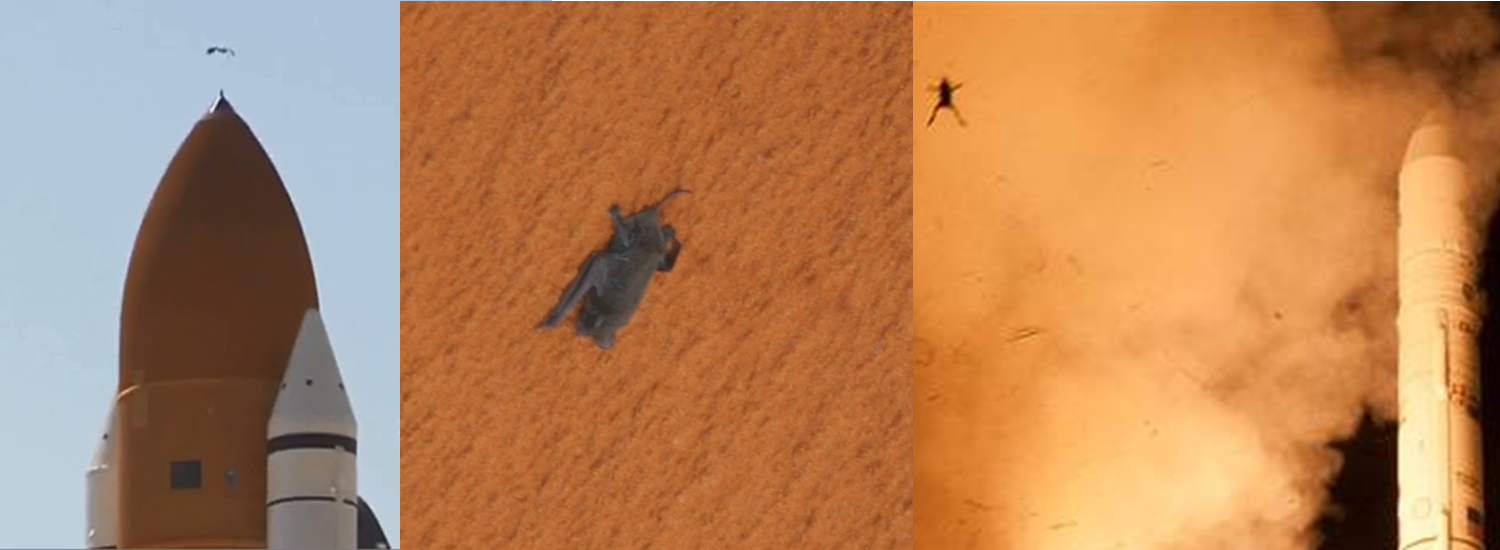
CAPE CANAVERAL, Fla — The list of animal launch day casualties increased by one (that we’re aware of) this past week with the launch of NASA’s LADEE spacecraft to the Moon. A frog took a “giant leap”—and not in a good way. But this amphibian is not the only creature to intersect with space flight history in a final way. In 2005, one of the many turkey vultures that call the Merritt Island National Wildlife Refuge home was at the wrong place at the very wrong time. Just as Space Shuttle Discovery thundered aloft, a passing turkey vulture was directly above the orbiter and was struck and killed.
[youtube_video]http://youtu.be/zTCjx5DEPkE[/youtube_video]
Video courtesy of NASA
Fast forward four years to the launch of STS-119. A free-tail bat was seen clinging to the external tank of Space Shuttle Atlantis. Shortly thereafter, launch commenced and the wayward critter was forever immortalized as “Space Bat.” A similar incident with a bat is also reported to have taken place back during the STS-90 mission in 1998.
As the Merritt Island National Wildlife Refuge exists hand-in-hand with NASA’s Kennedy Space Center, just as Wallops Flight Facility resides next to Wallops Island National Wildlife Refuge, these types of incidents are bound to take place. NASA has a number of preventative measures in place to ensure that they don’t. These include (and have included) warning sirens, decoy owls to scare off confused woodpeckers, and launch team members who scan the area for these creatures.
Want to keep up-to-date with all things space? Be sure to “Like” AmericaSpace on Facebook and follow us on Twitter: @AmericaSpace




Considering the many “swampers” who have an appetite for crawdads and frog legs, maybe life in Wallops Island National Wildlife Refuge isn’t so risky after all! 🙂